1888 First Edition General P. H. SHERIDAN Memoirs, Civil War American Indians


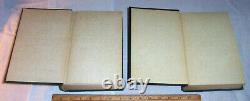
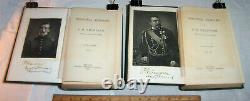
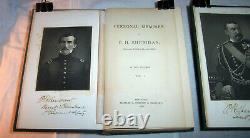
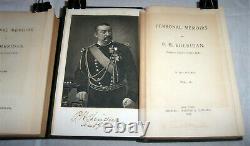
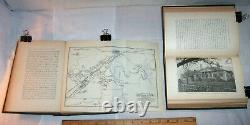
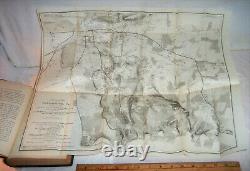
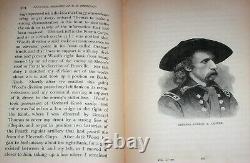
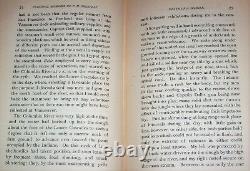

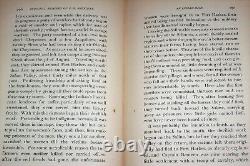


Sheridan General United States Army. In Two Volumes (Complete) Published By Charles L. Webster & Company New York. Stamped & Gilt Binding Decoration. 6.25" x 9.25" Volume I - xiii + 500 pages. Volume II - xi + 486 pages. 133 Years Old The Personal Memoirs of General Philip Henry Sheridan A Complete Set in Two Volumes First Edition The title-page in each volume is dated 1888.
This is Sheridan's account of his own life, penned by my own hand. Sheridan completed it just days before he died on Aug. These books, the first edition of his memoirs, were published later the same year.
His career was noted for his rapid rise to major general and his close association with Lt. Grant , who transferred Sheridan from command of an infantry division in the Western Theater to lead the Cavalry Corps of the Army of the Potomac in the East. In 1864, he defeated Confederate forces in the Shenandoah Valley. His destruction of the economic infrastructure of the Valley, called " The Burning " by residents, was one of the first uses of scorched earth tactics in the war. In 1865, his cavalry pursued General Robert E.
Lee and was instrumental in forcing his surrender at Appomattox. Sheridan prosecuted the later years of the Indian Wars of the Great Plains of the American West.
This effort tainted his reputation with some historians (who accuse him of racism and genocide), however Sheridan was seen as a hero by many. Both as a soldier and private citizen, he was instrumental in the development and protection of Yellowstone National Park.(see more detailed biographical information below). 17 Illustrations and 27 Maps Many of the maps are large and fold-out. Each of the frontispieces is a steel engraved portrait of Sheridan, at different stages of his life. Just very light wear to the bindings. The bindings are in uncommonly good condition for this set.
The gilt (gold) decoration on the bindings is still very good, and still bright. (see the photos) All four hinges are tight. The steel engravings are just lightly foxed. The pages and the maps are in excellent condition, in both volumes. It should be noted that this set of Sheridan's Memoirs, the First Edition, is hard to find in condition this good! List of the Maps and Illustrations.Steel Engraving - General P. Sheridan [with facsimile of Sheridan's Autograph] 2. General Sheridan's War Horse , " Rienzi " 5. Portrait - General Wesley Merritt 6.
Portrait - General George Armstrong Custer 7. Portrait - General Sheridan , during the War 8. Portrait - General James H.
Sheridan [with facsimile of Sheridan's Autograph] 10. Portrait of Miss Rebecca M. Facsimile of a Letter from President Abraham Lincoln , Sept. Facsimile of a Letter from President Abraham Lincoln , Oct. Sheridan's Headquarters at Cedar Creek 14. Portrait - General Horatio G. Portrait - General William H. Portrait - General George Crook 17. Sheridan and his Staff , Dinwiddie Court House. Williamson's Trail from Fort Reading , California to Fort Vancouver , Washington Territory 2. Sheridan's Fight at the Cascades of the Columbia in 1856 3. Map - Northeastern Mississippi 4. Map - Battle of Booneville 5. Map - Field Operations of the Army of the Cumberland , 1862 and 1863 6. Map - Battlefield of Stone River 7. Map - Positions of Gen. Sheridan's Division in the Battle of Chickamunga 8. Sheridan's Division prior to the Attack on Missionary Ridge 9. Map - First Expedition - The Richmond Raid 10. Map - Second Expedition - The Trevillian Raid 11. Map - Third Expedition - Raid to Roanoke Station 12. Map - Map of All Expeditions 13. Map - Map of the Shenandoah Valley 14. Map - Battle-field of Winchester , Virginia , Sept. 19, 1864 [Opequon] [this is the Largest of the Folding Maps, about 17" x 22" - see the photo] 15. Map - Battlefield of Fisher's Hill 16.Map - Battlefield of Cedar Creek 17. Map - Fourth Expedition - Merritt's Raid to Loudon 18. Map - Fifth Expedition - Torbrt's Raid to Gordonsville 19. Map - Battlefield of Wayneboro 20. Map - Sixth Expedition - Wincester to Petersburg 21.
Map - Battlefield of Dinwiddie Court House 22. Map - Battlefield of Five Forks 23. Map - Battlefield of Sailor's Creek 24. Map - Seventh Expedition - Appomattox Campaign 25.
Map - Eighth Expedition - To the Dan River and Return 26. Map - Indian Campaign of 1868 - 1869 27. Map - Parts of France , Belgium and Germany.Biographical Information: General Philip Henry Sheridan (1831 1888) P. Sheridan was born March 6, 1831 in Albany, New York (or perhaps, Boston, Massachusetts), to John and Mary Sheridan, immigrants from County Cavan, Ireland.
He grew up in Somerset, Ohio. Fully grown, he reached only 5 feet 5 inches tall. In 1848, a family friend obtained an appointment for him at West Point. In his third year he was suspended for a year for fighting with a classmate.The day previous Sheridan, for a perceived insult, had threatened to run him through with a bayonet. He graduated 34th in his class, near the bottom, in July of 1853. After graduation Sheridan was assigned to the 1st Infantry at Fort Duncan , Texas , then to the 4th Infantry in the Pacific Northwest. There he performed duty at the Grand Ronde Indian Reservation in Yamhill County, Oregon The American Civil War Sheridan started the Civil War as Chief Quartermaster of the Army of Southwest Missouri.
Feeling that he would be a better field commander than a support officer he persisted until he got an appointment as a colonel with the 2nd Michigan Volunteer Cavalry. A month later he commanded his first forces in combat. At the Battle of Booneville, July 1, 1862, he held back several regiments of General James R. His actions so impressed the commanders that they promoted him to Brigadier General and assigned him command of the 11th Division, 3rd Corps, Army of the Ohio.
It was just after Booneville that one of his fellow officers gave him the horse, which he named Rienzi, that he would ride throughout the war. On October 8, 1862, he again distinguished himself during the Battle of Perryville. He pushed two Arkansas brigades across Bull Run but was ordered back by 3rd Corps commander, Major General Charles Gilbert. Both sides suffered heavy casualties. On December 31, 1862, the first day of the Battle of Murfreesboro, Sheridan held back the Confederate advance until his ammunition ran out and he was forced to withdraw.
For his actions he was promoted to Major General and put in charge of the 2nd Division, 4th Corps, Army of the Cumberland. In six months he had risen from captain to major general. At the Battle of Chickamauga, September 19 and 20, 1863, Sheridan along with the rest of the army was forced to withdraw after two days of heavy losses. During the Siege of Chattanooga, at the Battle of Missionary Ridge on November 25, 1863, Sheridan took the initiative and broke through the Confederate lines.Grant, newly promoted to be general-in-chief of all the Union armies, decided he wanted Sheridan when he went east. In March, 1864, Grant assigned him to command the Cavalry Corps of the Army of the Potomac. During the Overland Campaign, Sheridan fought at the Battle of the Wilderness (May 57, 1864), and Spotsylvania Court House (May 821, 1864). From May 924, 1864, Grant sent him on a raid toward Richmond.
The raid was less successful than hoped, although his soldiers managed to kill General J. Stuart at Yellow Tavern (May 11, 1864).
Rejoining the Army of the Potomac, Sheridan's cavalry excelled at Haw's Shop (May 28, 1864). Sheridan seized Cold Harbor (June 112, 1864) and withstood a number of assaults until reinforced.Army of the Shenandoah All during the war, the Confederacy sent armies out of Virginia through the Shenandoah Valley to threaten Washington, D. And raid throughout Maryland and Pennsylvania. Early, following the same pattern in the Valley Campaigns of 1864, attacked Union forces near Washington and raided several towns in Pennsylvania.
In August, 1864, General Grant organized the Army of the Shenandoah. He put Sheridan in charge to drive Early out of the Shenandoah and close it as a route to Washington. Sheridan went at it with vigor. He beat Early at Third Winchester and Fisher's Hill.
In the final battle, at Cedar Creek, he, by his presence, rallied the troops who were retreating after a surprise attack. Sheridan ordered total destruction in the Shenandoah - his troops destroyed crops and livestock, seized stores and equipment, and burned what they couldn't remove. In reference to another Confederate army using it to threaten the North, he said "If a crow wants to fly down the Shenandoah, he must carry his provisions with him". The destruction presaged the scorched earth tactics of Gen. Sherman's March to the Sea through Georgia - deny an army a base from which to operate and bring the effects of war home to the population supporting it.Sheridan rejoined the Army of the Potomac in March, 1865. At Waynesboro, March 2, 1865, he trapped the remainder of Early's army and 1500 soldiers surrendered. On April 1, 1865, he cut off General Robert E. Lee's lines of support at Five Forks, forcing Lee to evacuate Peterburg.
President Abraham Lincoln sent Ulysses S. Grant a telegram in April 7, 1865 : Gen. Sheridan says'If the thing is pressed I think that Lee will surrender. Let the thing be pressed. At Appomattox Court House, April 9, 1865, Sheridan blocked Lee's escape, forcing Lee to surrender later that day. After the Civil War At the close of the Civil War, Sheridan was sent to the Mexican border under the Monroe Doctrine to "observe" the disputes between the French forces of Napoleon III, and the Mexican republicans. Political pressure, and the growing resistance of Benito Juárez induced the French to not press their claims over Mexico. Napoleon III withdrew his troops in 1866. Sheridan later admitted in his memoirs that he had supplied arms to Juárez's forces... Supplied with arms and ammunition, which we left at convenient places on our side of the river to fall into their hands. In 1866, with Reconstruction barely started, Sheridan was appointed military governor of the Fifth Military District (Texas and Louisiana). He severely limited voter registration for former Confederates and then required that only registered voters (including black men) be eligible to serve on juries. On July 30, 1866, while Sheridan was out of town, a white mob broke up the state constitutional convention in New Orleans. It was no riot ; it was an absolute massacre. An inquiry implicated the Mayor of New Orleans and President Andrew Johnson. Sheridan, under his authority, relieved the Mayor. The governors of Texas and Louisiana complained so much that he finally removed them.First the Louisiana governor went, and the Texas governor followed for being an "impediment to the reconstruction of the State". Within a month of the Texas governor's firing, President Johnson removed Sheridan.
Indian Wars During the Civil War, the Indians on the Great Plains were generally peaceful. In 1864, Major John Chivington attacked a peaceful village of Arapahos and Southern Cheyenne at Sand Creek in Colorado, killing over 150 Indians. That attack ignited a general war with the Indians. The protection of the Great Plains fell under the Department of Missouri. General Winfield Scott Hancock was assigned to the Department of Missouri in 1866 but had been unable to get the Indians to abide by their treaties or by the newly signed ones.They had also killed and kidnapped a considerable number of settlers on the frontier. Under pressure from the various governors in the Great Plains, Grant turned to Philip Sheridan. In 1867, Grant appointed Sheridan to head the Department of Missouri.
His first task was to end the Indian Wars. His troops, even supplemented with state militia, were spread too thin to have any real effect. He conceived a strategy based on his Shenandoah experience. In the Winter Campaign of 1868 - 69 he attacked the Indians in their winter quarters, taking their supplies and livestock and killing those who resisted. This strategy was to continue until the Indians abided their treaties. A number excesses occurred - including at Wounded Knee. The Indian raids subsided during the 1870s and by the early 1880s were almost over.There is a widely-told story attributed to Sheridan during his campaign against the Indians. Some natives reputedly told Sheridan, "We're good Indians, " to which Sheridan is often quoted as having replied, The only good Indians I ever saw were dead. The story is of questionable authenticity and Sheridan always denied it. Other Incidents In 1870, the Secretary of War, at Sheridan's request, authorized him to observe and report on the Franco-Prussian War.
As a guest of the King of Prussia, he was able to observe the planning and execution of some of the battles. In 1871, Sheridan took several companies of troops to Chicago during the Great Chicago Fire. The mayor, to calm the panic, put the city under martial law, and issued a proclamation putting Sheridan in charge. As there were no widespread disturbances the martial law was lifted within a few days. In 1883, Sheridan succeeded General Sherman as Commander-in-Chief of the Army and held that position until shortly before his death.Yellowstone Park The protection of the Yellowstone area was Sheridan's personal crusade. In 1870 he authorized Lieutenant Gustavus Doane to escort the Washburn Expedition in 1870, and for Captain John W.
Barlow to escort the Hayden Expedition in 1871. As early as 1875 Sheridan promoted military control of the area to prevent destruction of natural formations and wildlife. In 1882, the Department of the Interior granted rights to the Yellowstone Park Improvement Company to develop 4000 acres in the park.
Their plan was to build a railroad into the park and sell the land to developers. Sheridan personally organized opposition to the plan and lobbied Congress for protection of the park; including expansion, military control, reducing the development to 10 acres, and prohibiting leases near park attractions. In addition to lobbying Congress, he arranged an expedition to the park for President Chester A.
Arthur and other influential men. His lobbying soon paid off. A rider was added to the Sundry Civil Bill of 1883, giving Sheridan and his supporters almost everything they had asked. In 1886, after a string of ineffectual and sometimes criminal superintendents, Sheridan ordered the First Cavalry into the park. The military operated the park until the National Park Service took it over in 1916.
Personal life In 1870, Sheridan toured most of Europe after his inspection of the military affairs of the Franco-Prussian War. On June 3, 1875, he married Irene Rucker, a daughter of a long time army officer. She was 22, he 44. They had four children; Mary, Philip Jr. And twin daughters, Irene and Louise. After his death Irene never remarried, saying, I would rather be the widow of Phil Sheridan than the wife of any man living.After the marriage Sheridan and his wife moved to Washington. They lived in a house given to them by Chicago citizens in appreciation for Sheridan's protection of the city after the Great Chicago Fire in 1871. On November 1, 1883, Sheridan succeeded William T. Sherman as Commanding General, U.
Army , and held that position until shortly before his death. He was promoted on June 1, 1888, shortly before his death, to the rank of general in the regular army the rank was titled " General of the Army of the United States ", by Act of Congress June 1, 1888, the same rank achieved earlier by Grant and Sherman, which is equivalent to a four-star general, O-10, in the modern U. He was fearless in all his endeavors.
Although even his admirers admitted to his Irish temper, he always had the loyalty of the many men who served under his command. He died August 5, 1888, in Nonquitt, Massachusetts. In Sheridan's Honor Fort Sheridan in Illinois was named to honor General Sheridan's many services to Chicago. The M551 Sheridan tank is named after General Sheridan. Sheridan in Yellowstone National Park was named for Sheridan by Captain Barlow in 1871.
Treasury Notes issued in 1890 and 1891. Sheridan County, Montana , Sheridan County, Wyoming , and Sheridan County, Kansas are named for him, as are the cities of Sheridan, Wyoming , Sheridan, Arkansas , and Sheridan, Oregon. The item "1888 First Edition General P. SHERIDAN Memoirs, Civil War American Indians" is in sale since Tuesday, July 6, 2021. This item is in the category "Books & Magazines\Antiquarian & Collectible".
The seller is "rickl711" and is located in Coventry, Rhode Island. This item can be shipped worldwide.- Year Printed: 1888
- Country/Region of Manufacture: United States
- Topic: Civil War (1861-65)
- Binding: Hardcover
- Region: North America
- US Cavalry American West: United States Military History
- Plains Indians National Yellowstone Park: General George Armstrong Custer
- Battles Maps Shenandoah Valley Virginia: Ulysses S. Grant President Abraham Lincoln
- Author: Philip H.
Sheridan
- Subject: Military & War
- Andrew Johnson Union: Confederate Armies Gen. Lee
- Great Chicago Fire Illinois: Wyoming Montana Sioux Cheyenne
- Original/Facsimile: Original
- Language: English
- Publisher: Webster
- Special Attributes: 1st Edition


